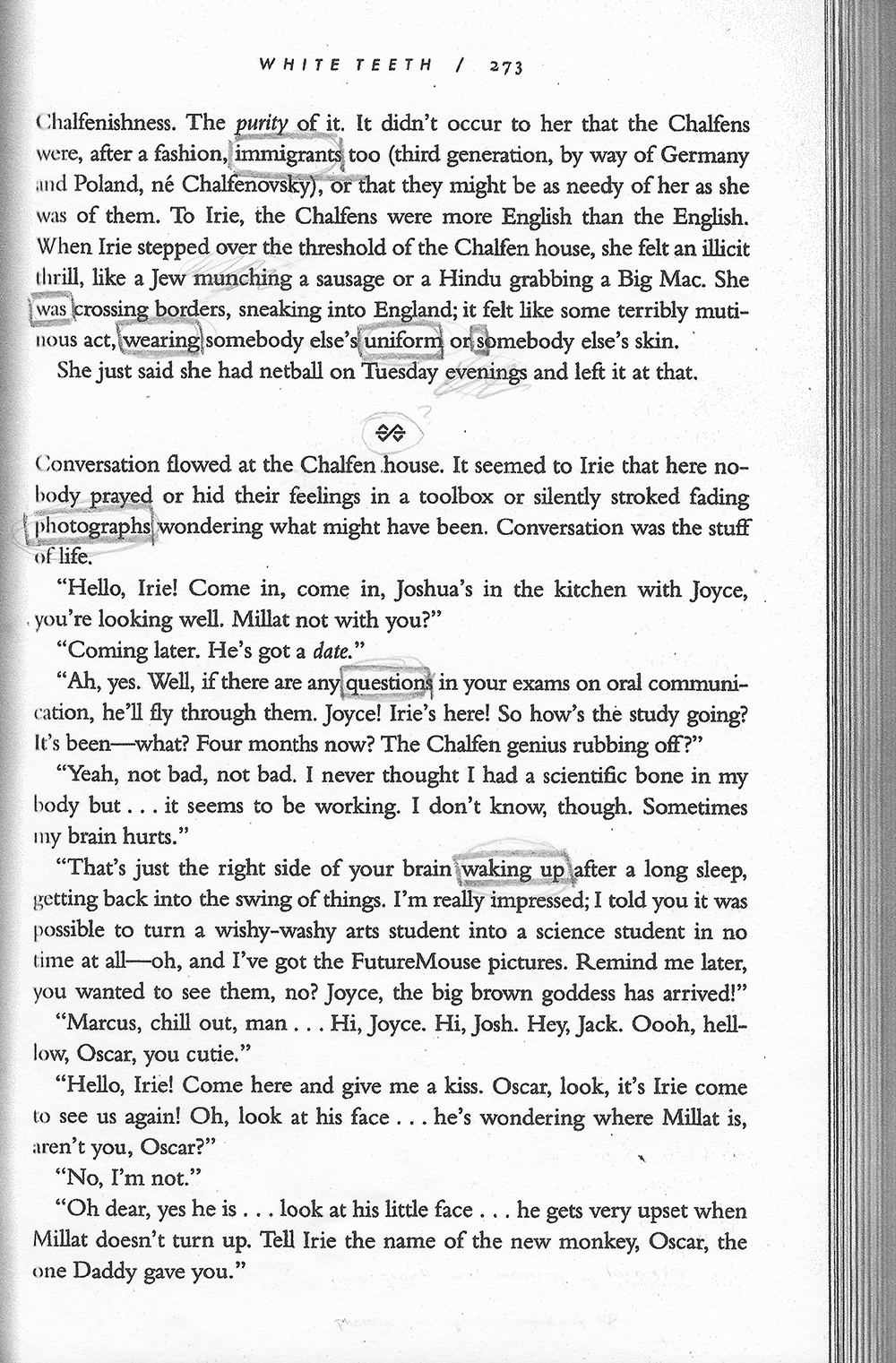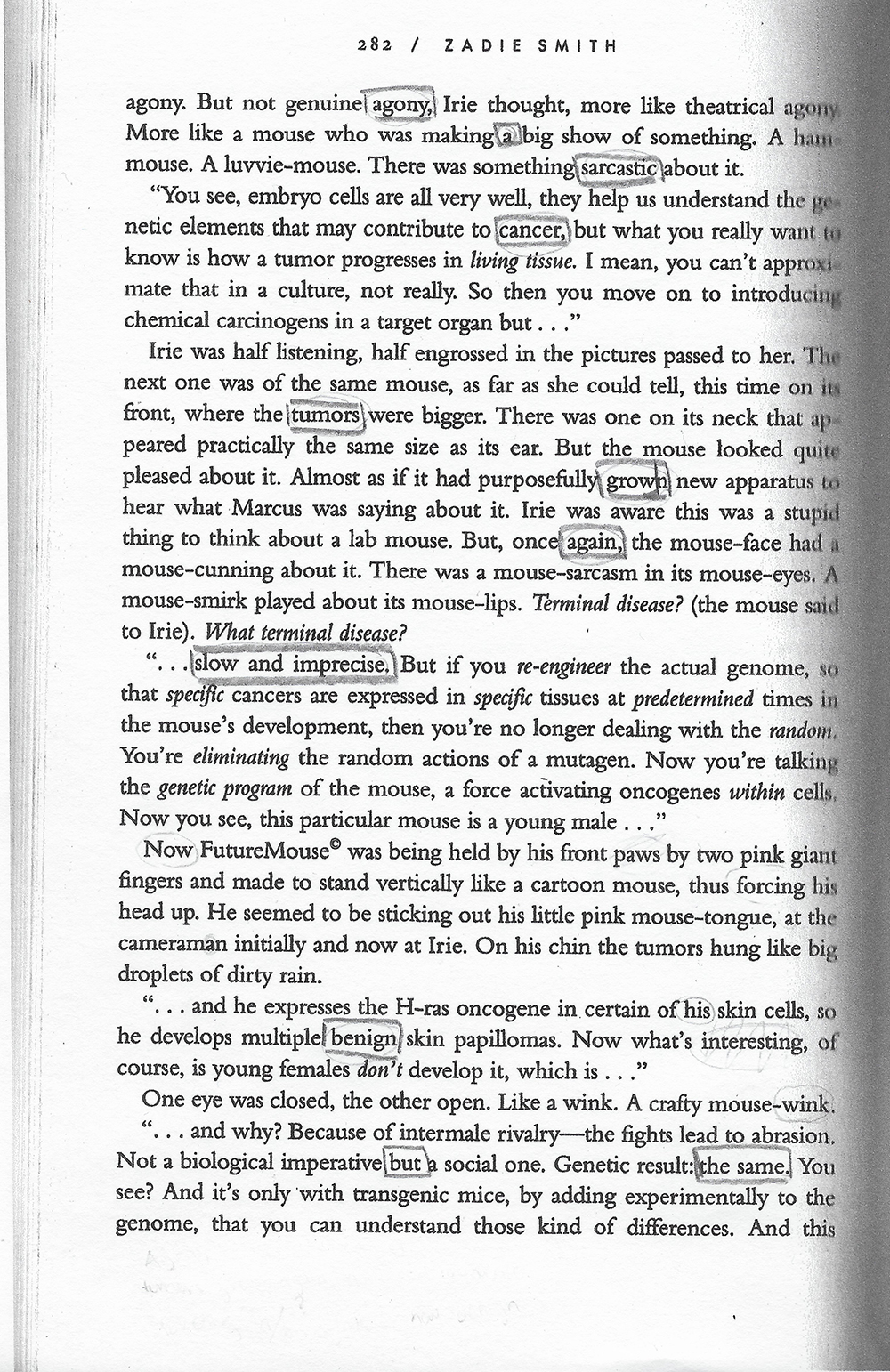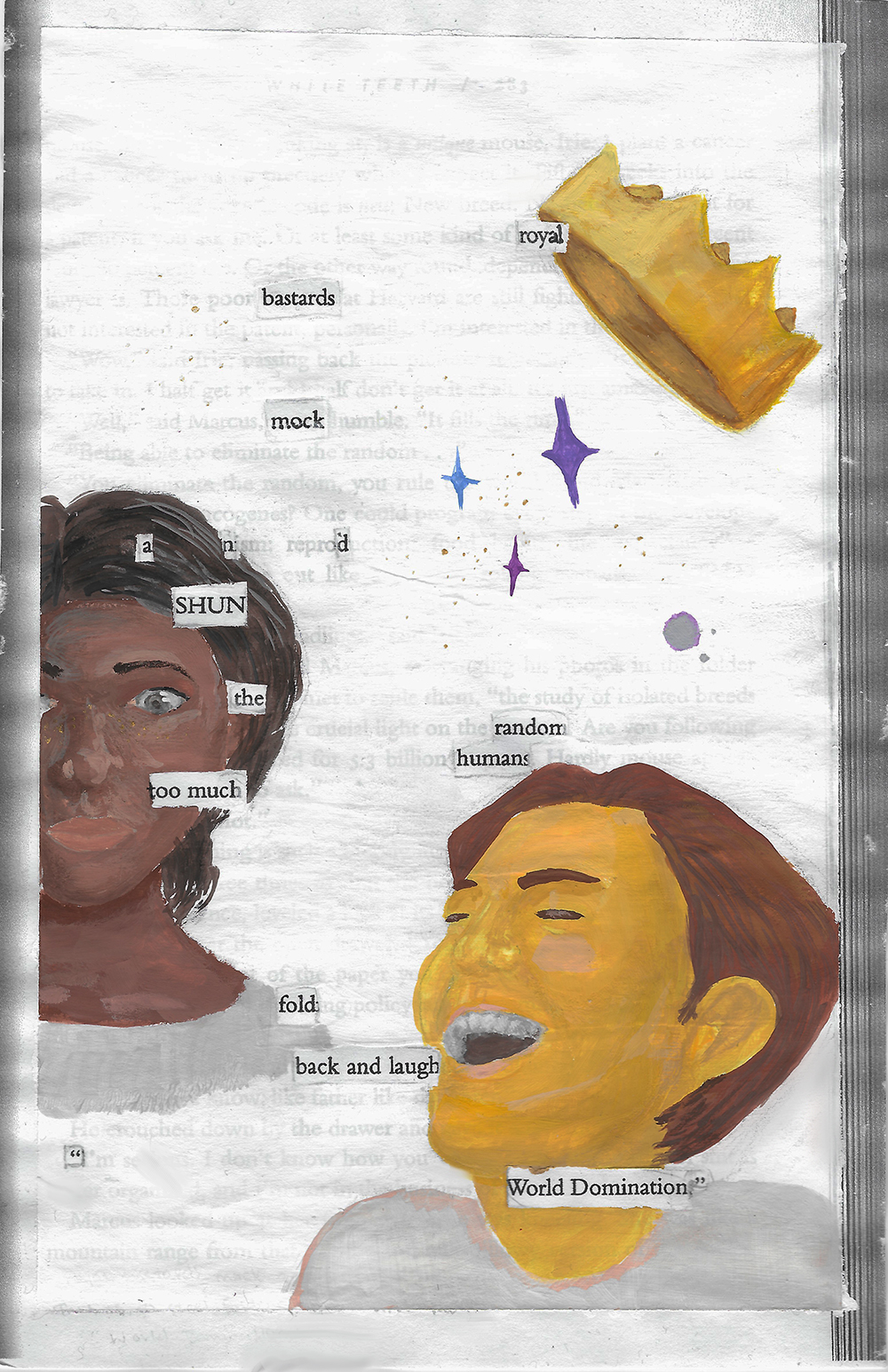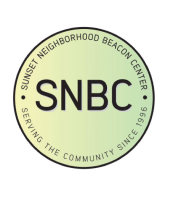For this post I was feeling adventurous, so I decided to create something that I’ve wanted to try for a long time: blackout poetry. As an artist and wannabe creative writer, I feel inspired every time I see this visual form of poetry. I used gouache for this project because all my posts thus far have utilized different mediums and I might as well try a new type of paint for every post. It was a really cool process so I’m going to share a bit about how it all came together.
Gouache is actually one type of paint that I haven’t used in an entire piece before. I had to swatch out all of the paints in the set to see how they looked outside of the tubes, since I’d never used most of them before. It took a long time because I was working with a gouache set my dad had bought me for my birthday which contained a total of 60 tubes of paint.
I also tested out how they might look on top of pen scribbles (although I probably should have tested to see whether the pen was waterproof first) and different surfaces like glue and gesso (which is basically a canvas primer). It didn’t work so well on the glue, which was to be expected since the glue is made to be waterproof, so when I added water to the gouache it didn’t dry very well. The gesso worked best, which was to be expected as gouache is supposed to work on a variety of surfaces including canvas. The entire process took about two hours.
As for the text that I took my words from, I was trying to find a book that I had more of a personal connection to, but that seemed to be too much for my brain to process so I ended up just choosing the most recent book I finished, White Teeth by Zadie Smith. It was one of my better summer reading books and had a lot of serious themes despite the weirdness of the overall plot. The story focuses a lot on finding your identity and traditional vs. old beliefs.
I started by scanning a copy of the text so that I didn’t have to ruin one of my books. I then circled all the words that stood out to me. From those words, I tried to decide on the direction the poem was taking and added/removed words until it made sense. Although Zadie Smith enjoys joking around a lot, the language tends to be rather mature, which is probably why a lot of my blackout poetry from this book seems to be on the darker side compared to what I’d normally write (or maybe that’s just this is just my dark side revealing itself).
I taped over the sides of the page with masking tape (as one would do with a watercolor painting) because I was afraid that the printer paper that I was painting would shrivel up due to the moisture of the paints. I first painted on gesso because I didn’t want to use up my white paint immediately and I hoped it would cause less wrinkle-ledge than the paints. Despite my efforts to reduce the damage, the paper did end up a bit wrinkled after I painted it. It calmed down a bit after it dried but it’s still pretty easy to see the wrinkles. If I ever try this again I’d use a medium that doesn’t pair badly with flimsy printer paper or I’d find a way to print the text onto better paper. Something that I did like about the gesso was that the words I didn’t use still show through the paint a bit.
My artistic style in this piece was a bit different from my other posts since it’s less of a complete scene and everything is more realistic. I tried to make the first one’s expression sad and cover it up with more words like she was being shunned, but I feel that the result is more of a neutral expression. As for the one in the bottom corner, I tried to make him look like he was laughing but he kind of just looks like he’s yawning or talking with his eyes closed, but maybe that’s just me being critical of myself because I don’t paint faces very often! I definitely want to work on facial expressions in the future.
Painting on the gesso took up the most time because I had to wait for every layer to dry before painting on the next layer, of which I did three, and while waiting for them to dry I worked on homework and only painted on the next layer when I remembered that I was supposed to do that. I finished the actual painting pretty quickly, under three hours, because the gouache dry pretty fast. The only trouble I had with the paints was due to the paint’s ability to reactivate with water which made painting over them a bit more difficult. I’m sure if I practiced a bit more with the medium I would start treating them less like acrylics and come to know their strengths and weaknesses.
This was a different experience since I don’t normally work with such a wide range of colors. When painting with acrylics I normally paint using a limited color palette including five colors: red, yellow, blue, black, and white. It was weird having access to a whopping 60 colors, which meant that I didn’t have to rely on mixing my own colors. Also, I would caution against colors in your bedroom at 9 pm at night. That’s when I was painting the boys face in the painting and since the light in my room is kind of yellow, instead of mixing a peachy skin color like I was aiming for, he turned out kind of yellowish. If I was thinking clearly, I would have mixed in some purples or other colors that would have dulled down the yellow, but instead, I wound up painting him the same color as the crown. I probably could have just painted over it afterward to fix it up, but I didn’t want to, and after all, I thought his ear looked nice and I didn’t was to mess that up.
I will leave you with a couple of other poems I made that I might have end up as whiteout paintings in the future. Thanks for checking them out!







